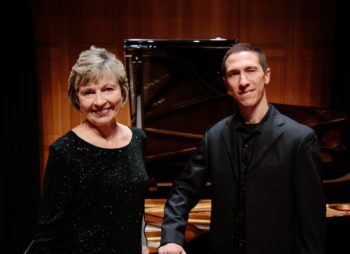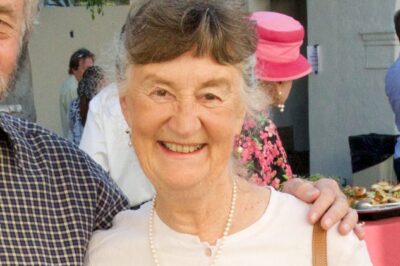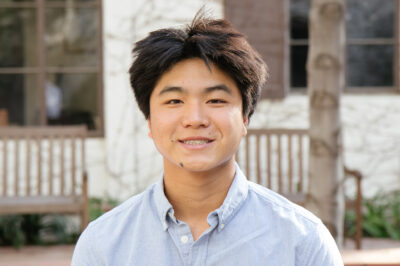ensemblePROVA | Online Recital

ensemblePROVA is PCM’s new-music performing ensemble. The ensemble is co-directed by Dr. Susan Svrček and Dr. Nic Gerpe.
Dr. Susan Svrček: ensembelePROVA is a group of young musicians eager to explore sounds they have never before created with their instruments, thus widening and expanding their understanding of what their instruments can actually do!
Years ago, I had this crazy thought that, yes(!), young people are open, curious, adventurous, and willing to explore what has always been present: “Music is everywhere. You just have to have the ears to hear it.” (John Cage)
It began in my own studio. At one point in time, no one could leave or graduate without having gotten inside the piano to make weird sounds. Knocking on the soundboard. Plucking and strumming strings. Screaming into the piano with the pedal down. Indeed, musical instruments were created to make a certain variety of sounds. Hmmm. So, just as we explore the vastness of the earth, the depths of the oceans, and the far reaches of outer space, we also can explore the infinite world of sound.
What better way than to go on that adventure with friends, peers, colleagues, and crazily enough, sometimes strangers! Then, they are strangers no more. Remember, music brings us together and makes us a community. An ensemble is a very small community. Tightly knit. Fun loving. Hard working. Thinking. Sensing. With imagination.
Dr. Nic Gerpe: ensemblePROVA was started in 2019 as a foray into contemporary music for four of our very adventurous students — Amber Chen, Annie Debreu, William Liu, and Leila Wu.
We began with the mission of exposing our students to modern music and performance techniques, and so their assigned pieces required them to go beyond traditional repertoire and means of sound production. Aside from new and novel harmonies and sound colors, you’ll hear them play inside the piano, on a piano prepared with nuts, bolts, rubber mutes, and on a toy piano. You’ll even hear a performance that doesn’t involve a piano at all!
About the Program:
Henry Cowell’s Tides of Manaunaun, performed by Amber Chen, is based on an ancient Irish legend and requires her to play the instrument with her forearms and palms, making what we call cluster chords. Imagine big swells of waves and sounds from the depths when you hear these special sounds.
Annie Debreu plays George Crumb’s Berceuse for the Infant Jesu, which is the second movement of a wonderful set of piano pieces called A Little Suite for Christmas, A.D. 1979. This suite is based on Nativity frescoes by the painter Giotto, which are located at the Arena Chapel in Padua, Italy. Each movement depicts a Nativity scene. Here, the Berceuse is a rocking lullaby for the infant Jesus in His manger. Annie has to reach inside the piano and gently touch the strings while playing as normal on the keys, creating harmonics. Listen for this beautiful, otherworldly bell-like sonority.
Morton Feldman’s Piece for Four Pianos is a quiet, meditative piece that is intended to be wildly different from one performance to the next. The pianists must start the piece together, so the first chord is struck simultaneously. After that, they can play the piece at any (slow) speed that strikes their fancy, and the work is over when the last pianist finishes.
William Liu performs John Cage’s Suite for Toy Piano on — you guessed it — a miniature instrument! Enjoy the charming and delicate sound of the toy piano.
You’ll probably notice that the piano in John Cage’s Prelude for Meditation — played by Amber Chen — doesn’t sound like any piano you’ve ever heard before. That’s because it’s been prepared with a variety of objects placed on or in between the strings, such as paper clips, nuts and bolts, and rubber mutes. The piano is then played from the keyboard, and the various objects placed inside make the piano sound like a percussion ensemble.
Annie Debreu plays Deep As The Sky, by Juhi Bansal. This piece comes from a set called Travels, each being based on a different National Park or natural monument from the composer’s travels throughout the United States. Deep As The Sky is a musical depiction of Crater Lake, in Oregon.
Lastly, our four performers come together for Ernst Toch’s Geographical Fugue, which doesn’t involve the piano at all! Instead, the parts are spoken by our group, and the piece is a highly complex fugue (a la J.S. Bach) depicting towns, countries, and various landmarks throughout the world.
We’re incredibly proud of what these students have accomplished in preparing these adventurous, unusual, and challenging works, and we hope that you enjoy the program!



